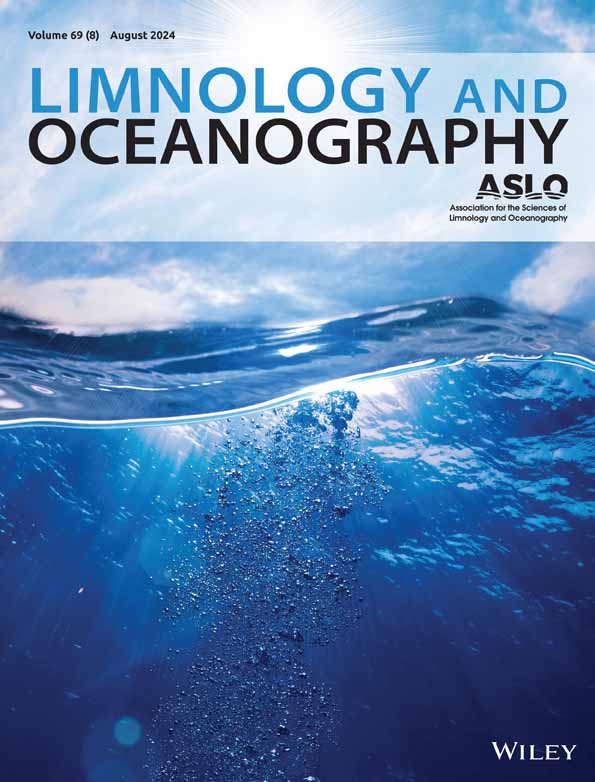Phytoplankton community dynamics and vertical nutrient fluxes during the winter‐to‐spring transition in a monomictic temperate reservoir
IF 3.8
1区 地球科学
Q1 LIMNOLOGY
引用次数: 0
Abstract
Winter phytoplankton blooms have been documented in several temperate lakes, yet the mechanisms triggering them remain poorly understood. Understanding the ecology of these blooms is key for predicting succession patterns, especially given the impact of climate change on winter conditions. To elucidate the relationships between exponential algal growth, abiotic conditions, and vertical nutrient transport, we investigated the phytoplankton community in a deep temperate reservoir during the winter‐to‐spring transition. We collected biweekly physical, chemical, and phytoplankton data, along with monthly sedimenting material data. We found that our study system can support the exponential growth of diatom species in late winter during circulation, 6–10 weeks before stratification onset, and once photosynthetically active radiation had reached 1.3 mol m温带单一水库冬春过渡期间浮游植物群落动态和垂直养分通量
在一些温带湖泊中,冬季浮游植物大量繁殖已经被记录下来,但引发它们的机制仍然知之甚少。了解这些水华的生态是预测演替模式的关键,特别是考虑到气候变化对冬季条件的影响。为了阐明指数藻生长、非生物条件和垂直养分运输之间的关系,我们研究了深温带水库中浮游植物群落在冬春过渡时期的变化。我们每两周收集一次物理、化学和浮游植物数据,以及每月收集一次沉积物质数据。研究发现,在冬季后期环流阶段、分层发生前6-10周以及光合有效辐射达到1.3 mol m−2 d−1时,我们的研究系统能够支持硅藻物种的指数生长。浮游植物群落以硅藻、活动种和红毛浮游蓟马为主。这些物种表现出不同的生长模式和生态策略,可能是为了适应这一时期变化的非生物条件。其中,冬凌草在环流中分布均匀,分层发生后立即在~ 11 m深度形成叶绿素层。此外,这些优势浮游植物中的少数物种主要通过沉积影响垂直营养物质的运输。我们的研究结果表明,在弱光条件下,如果在放牧开始和下沉损失增加之前有足够的时间,温带湖泊的浮游植物可以在分层开始之前呈指数增长。我们的研究结果强调了冬季在塑造随后季节的物种分布方面的重要作用,并强调了湖沼学中年度视角的必要性。
本文章由计算机程序翻译,如有差异,请以英文原文为准。
求助全文
约1分钟内获得全文
求助全文
来源期刊

Limnology and Oceanography
地学-海洋学
CiteScore
8.80
自引率
6.70%
发文量
254
审稿时长
3 months
期刊介绍:
Limnology and Oceanography (L&O; print ISSN 0024-3590, online ISSN 1939-5590) publishes original articles, including scholarly reviews, about all aspects of limnology and oceanography. The journal''s unifying theme is the understanding of aquatic systems. Submissions are judged on the originality of their data, interpretations, and ideas, and on the degree to which they can be generalized beyond the particular aquatic system examined. Laboratory and modeling studies must demonstrate relevance to field environments; typically this means that they are bolstered by substantial "real-world" data. Few purely theoretical or purely empirical papers are accepted for review.
 求助内容:
求助内容: 应助结果提醒方式:
应助结果提醒方式:


